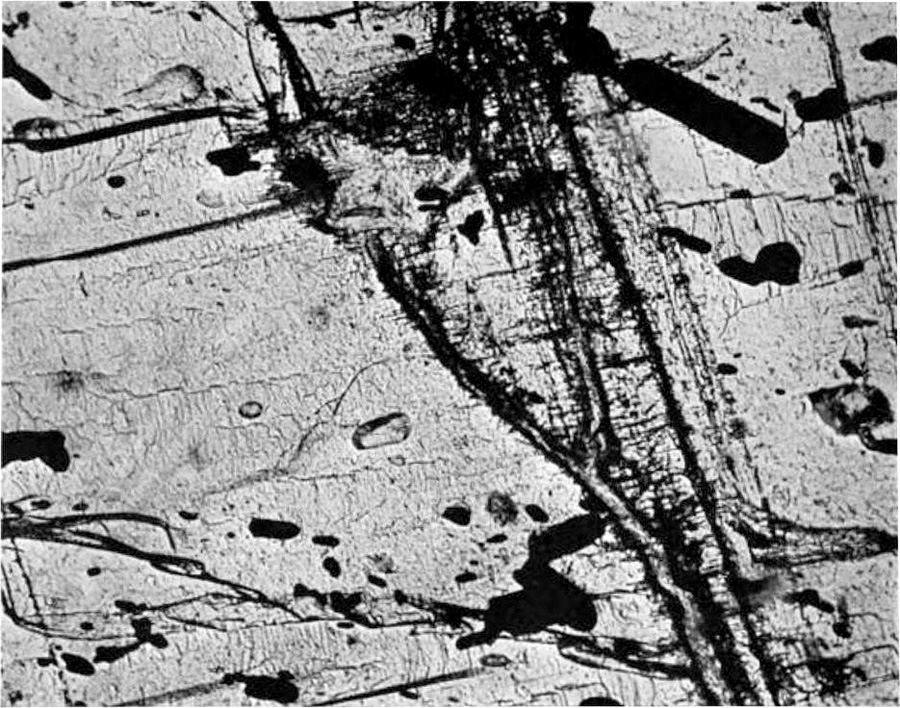the rutile inclusions, 1

Plate 37. Photomicrographs of rutile in cyanite, Charlotte County.
Fig. 1. Cyanite with inclusions of rutile crystals from Charlotte County. Englarged 105 diameters.
(cropped from page)
ex Thomas Leonard Watson and Stephen Taber. Geology of the titanium and apatite deposits of Virginia. Virginia Geological Survey. Bulletin III-A. 1913
Harvard copy, digitized September 15, 2007
—
“Microscopically the rutile is usually inclosed in the substance of the cyanite and to some extent in the quartz. It is sometimes formed along the boundaries of the cyanite and quartz, frequently cutting into their substance; along cleavage directions in the cyanite; and occasionally along irregular fractures, but in such relations as to indicate that the rutile formed prior to the fracture of the cyanite. Plate XXXVII, figs. 1 and 2, make clear these relations of the rutile.”
p 264
See wikipedia for more on rutile, whose main uses are “the manufacture of refractory ceramic, as a pigment, and for the production of titanium metal.”
epigram from page 214.
tags:
rutile; T. L. Watson & S. Taber, Geology of the titanium and apatite deposits of Virginia (1913)